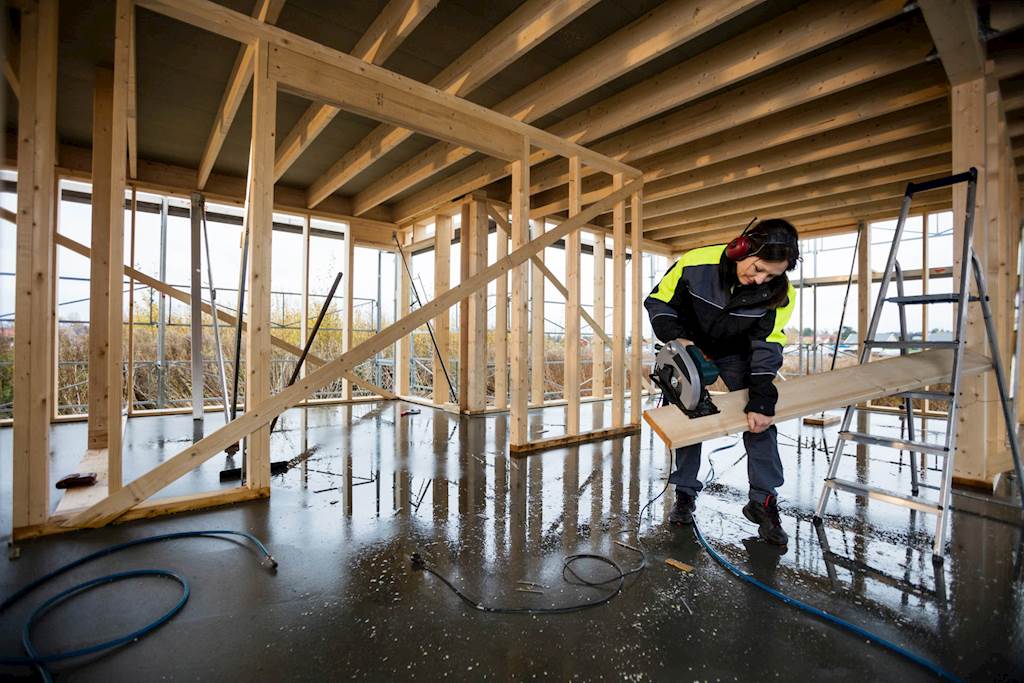Supplier of cherry pickers, Niftylifts, analyses the situation and discuss the current gender diversity problem.
Female roles in construction
Looking into the issue, it’s apparent that female roles in construction aren’t faring well.
According to Construction News, 50% of all construction firms claim they have never had a female manager. What is even more striking is that, when asking the women who did work within the industry, 48% claimed they had experienced gender discrimination in the workplace, with the most common example of this (28%) being inappropriate comments or behaviour from male colleagues. These are figures that prove that the industry still needs to enforce more regulations to change attitudes towards women in the industry and encourage equality.
When it comes to earnings, it seems as if women may be getting a raw deal. Nearly half of construction companies (42%) do not monitor equal pay between genders in the business and 68% were not aware of any initiatives to support women transitioning into senior roles. Furthermore, according to Randstad, 79% of men believe they earn the same as their female colleagues in the same position. However, 41% of women disagree — highlighting the need for better pay transparency within the industry to dispel perceptions that men are earning more.
Will the situation improve?
Current findings show that male employees are the dominant force in this sector. Regarding on-site construction, data shows that 99% of roles are filled by men. Despite the figures, 93% of construction workers believe having a female boss would not affect their jobs, or would in fact have a positive effect by improving the working environment.
Of course, things could change in the future, particularly if the drive for gender equality perseveres. According to Randstad, female employees are anticipated to constitute just over 25% of the UK’s construction workforce by 2020. But, could employing more women not help the sector ease the pressure on its low workforce numbers?
With the industry raising concerns that it is experiencing a shortage of skilled workers, 82% of people working in construction agree that there is a serious skills shortage. If demand is expected to require an additional million extra workers by 2020, women could account for a significant portion of that — especially in senior roles, which have previously been bias towards their male colleagues.
How the industry has changed
In 2005, there were just 6% of women in senior roles within the UK’s construction industry. However, fast forward to 2015, and this number rose to 16%, and is expected to grow as we approach 2020.
However, it’s also important to look at progression, so that we can ensure women are receiving the opportunity to develop and advance their careers. Back in 2005, 79% of women in the industry were dissatisfied with the progression of their careers. However, in 2015, this number had more than halved to just 29%. Some of this progression was even attributed to the fact that almost half of women in the industry (49%) believed their employer to be very supportive of women in construction.
Overall, there are still many improvements that need to be made for women in construction. Ranstad reports that there remains a tendency within the industry to exclude women from male conversations or social events, with 46% of females experiencing being side-lined. A further 28% said they had been offered a less important role and 25% reported being passed over for promotion.
Evidently, women currently within the sector are at least content with their positions; more than three quarters of female workers say that they would recommend a construction job to a female friend, daughter or niece.
With a 60% increase in the average annual salary for women in the construction sector in the past decade from £24,500 in 2005 to £39,200 in 2015, there is no denying that progress is being made to combat gender inequality. But, there’s still a long way to go. Hopefully, by 2020, we can report further positive developments, making roles more attractive to females and providing a solution to the lack of skilled workers in the industry right now.
Access the latest business knowledge in HR
Get Access


Comments
Join the conversation...